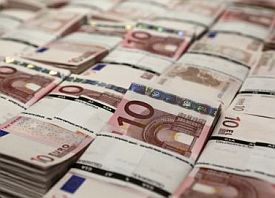Banks, Financial Services, Foreign trade , Investments, Latvia
International Internet Magazine. Baltic States news & analytics
Friday, 26.04.2024, 12:11
Current account deficit in Latvia at 2.4% of GDP in Q2
 Print version
Print version |
|---|
According to the Bank of Latvia economist Linda Vecgaile, the larger deficit in the 2nd quarter as compared to the 1st quarter of the year was mostly due to the negative balance of the primary income account that was related to lower inflows of European Union (EU) fund subsidies.
In the 2nd quarter, the goods external trade deficit was EUR 593.2 million (9.6% of GDP), and the increase in the deficit was caused by import of goods growing faster than goods export, as compared to the first quarter of the year. In the 2nd quarter as compared to the same period last year, Latvia's export of goods increased 2.9% and import of goods grew 2.7%. Export of optical devices and equipment, vegetable produce, and chemical products increased the most, whereas in imports, the highest increases were recorded for mechanisms and electronic devices, chemical products, and vegetable produce.
The positive balance of services rose to 7.1% of GDP or EUR 440.8 million in the 2nd quarter as compared to the 1st quarter. The increase mainly resulted from higher spending by travelers to Latvia and increasing export of other services.
In the 2nd quarter, the balance of primary income account was negative – EUR 29.6 million or 0.5% of GDP, which was due to dividend payments and reinvested profits, as well as a reduction in inflows of subsidies of EU funds. The balance of secondary income account became positive, reaching EUR 33.7 million or 0.5% of GDP.
The financial account balance was positive in the 2nd quarter of 2015, reaching EUR 147.6 million or 2.4% of GDP. In this period, foreign direct investment flowed into Latvia in the amount of EUR 113.6 million or 1.8% of GDP. The largest investments came from Sweden, Norway, and the United States, and they mostly targeted finance and insurance sectors.








 «The Baltic Course» Is Sold and Stays in Business!
«The Baltic Course» Is Sold and Stays in Business!

